Victory Tanks: KV, T-34 and IS-2
Tanks KV ("Klim Voroshilov")
The KV series tanks were truly outstanding Soviet heavy tanks during the initial phase of World War II. From 1939 to 1942, all likely opponents of the USSR were not armed with such armored tanks. A variety of weapons - from 76-mm tank guns to 152-mm howitzers, in 1941, made these tanks a terrible opponent for all German armored vehicles. Often, they remained invulnerable to the enemy, even when they substituted their own board to the Germans.
From 1940 to 1942, about 3,5 of thousands of KV tanks were launched, mainly in the KV-1 version, armed with an 76,2-mm cannon. Considering the fact that, at the initial stage of the war, neither Germany nor its allies had tanks that were at least somehow comparable with the booking and firepower KV, this car, together with the T-34, could seriously affect the outcome of the tank battles of the first year of the war, but this did not happen for a variety of reasons.
At the end of the 1930-s in the USSR, attempts were made to create a new heavy tank with dimensions smaller than that of the T-35, but thicker armor. In this case, initially the designers were not ready to abandon multi-bastion. They believed that one gun would be used to fight the infantry and suppress firing points, and the second to carry out anti-tank functions. As part of this concept, T-100 and SMK tanks were created, which were double-turreted and armed with 45-mm and 76-mm cannons. A reduced version of the QMS with one tower was created only as an experiment. However, it was this experiment that was successful. The car with one tower had two smaller skating rinks, there was less length and weight. This had a positive effect on the dynamic characteristics of the combat vehicle. In this case, the KV (as this experimental tank was called) received a diesel engine. The first model of the new tank was built in August 1939 of the year at the Leningrad Kirov Plant (LKZ). First, the leading designer of the tank was A.S. Ermolaev, then N. L. Dukhov.
All the experienced tanks were attached to the 20 Tank Brigade and took part in the war with Finland on the Karelian Isthmus. They took their first fight 17 December 1939, during an attempt to break through the Hottinen fortified area of the famous Mannerheim Line. At the same time, the debut of the new technology was smeared by the fact that the QMS tank was blown up by a mine and was abandoned by the crew. At the same time, the KV in combat conditions showed itself better, but it quickly turned out that its 76,2-mm cannon L-11 was rather weak for fighting dots. It was for this reason that the development of the KV-2 tank began, which was to be armed with an 152-mm howitzer, placed in an oversized turret.
First, they considered the possibility of installing the 152-mm howitzer of the 1909 / 30 model on a tank, but then opted for the 152-mm howitzer of the X-NUMX model of the year M-1938, which had the best performance. The installation of such a powerful tool required the designers to create a new tower, which was simply huge. The crew has grown to 10 people (6 people at the HF-5): a driver, radio operator, gunner, loader, lock, closing gun lock, tank commander. Additional tank armament were three 1-mm DT machine guns.
At the same time, the KV-2 received a more powerful modified diesel engine, the B-2K, which had horsepower 600, later appeared on the KV-1. True, this did not give a significant increase in the characteristics of the tank. Due to the installation of the new tower, the weight of the machine increased by 10 tons (the combat weight of the KV-2 was 52 tons), so it was difficult to compensate for this increase in engine power.
At the same time, the KV-1 and KV-2 tanks were distinguished by good reservations, which was an insurmountable obstacle for most of the VET guns of those years. The thickness of the front and side plates armor was 75 mm, the stern thickness from 60 mm to 75 mm. The thickness of the armor of welded towers was 75 mm, cast - 95 mm, as cast armor was less durable. The gun mask armor of the KV-1 was 90 mm, while the KV-2 was 110 mm. In 1941, the booking of a number of cars was increased even more by installing 25-mm armored screens.
Plans for the production of new machines were ambitious, but they were prevented from coming true war. In fact, their mass production was launched in February 1940, at the LKZ. Also, the Chelyabinsk Tractor Plant (ChTZ) had to be connected to the release of tanks, but before the war only a few KV units were assembled there. By the beginning of World War II, 386 tanks KV-1 and 199 tanks KV-2 were in the Red Army units.
Except for the episodic use of KV heavy tanks during the Finnish campaign, for the first time the vehicles went into battle in June 1941. The very first meetings of German tankers with KV caused them a shock. The tank was almost invulnerable to the German tank guns. Thus, the German 50 sub-caliber projectile tank gun could penetrate the frontal armor of the KV tank, which was located at rational angles of inclination, only from the 40 meters distance, the sides could be hit from 300 meters. Anti-tank artillery caliber 37 mm and 50 mm also proved to be ineffective, so for a long time the Germans remained the 88-mm anti-aircraft gun and 105-mm light field howitzer as the main means of fighting German KV tanks.
The very first encounters with the enemy revealed the high survival of HF on the battlefield. In some cases, the KV-1 and KV-2 tanks alone delayed the advance of the Nazis. But at the same time, the tank in the 1941 year was still “raw”. Affected by the haste of the introduction of the machine into production and the novelty of its design. A lot of trouble tankers delivered transmission, which often could not withstand the heavy loads of the tank. If in an open armed clash, the KV tanks were not equal, then in the conditions of retreat, many vehicles had to be destroyed or simply abandoned even due to minor breakdowns. There was no way to repair or evacuate these tanks. And in the second half of 1942, when the Germans had new, more powerful guns, the armor of the KV tanks ceased to be decisive in a dispute with the medium T-34 tank, and their release was gradually curtailed.
Medium Tank T-34
The medium tank T-34, or the legendary thirty-four, which can be found on a pedestal in many cities of the country, has become the most massive Soviet tank during the period of the Great Patriotic War. The car was mass-produced from the 1940 of the year. The tank remained the main one in the Red Army until the first half of 1944, when it was replaced by T-34-85, which is a modification of T-34. In total, more than 35 thousands of T-34 tanks were built during the war, and the production of T-34-85, which were produced in the USSR before 1950, exceeded 30 thousand units. And this is without taking into account the huge number of combat vehicles that were created on the basis of thirty-four.
The medium tank T-34 was mass-produced in the Soviet Union from the 1940 of the year. The legendary car, which became one of the symbols of the Great Patriotic War, was created by the designers of Kharkov Plant No. 183 under the direction of M. I. Koshkin. Due to the wide tracks and the powerful diesel engine B-2-34 (500 hp) of aviation type, the medium tank T-34 weighing more than 25 tons was distinguished by high mobility and was effective in maneuvering combat. The car had a good maximum speed - up to 50 km / h on the highway and throughput. The power density indicator was also excellent - 19,5 horsepower per ton. It was good and booking. Despite the relatively small thickness of armor - 45 mm, successfully chosen angles of armor plate often led to non-penetration and rebound when it hit the tank.
The successful design of the medium tank T-34 allowed the machine to provide good protection against enemy fire, reliable running gear and powerful weapons. Initially, an X-NUMX-mm L-76 gun with a barrel-length 11 caliber was placed on the tank. But since February, along with this weapon, the X-NUMX of the F-30,5 cannon began to be mounted on tanks with a caliber of 1941. Since the end of the summer 34, the T-41 tanks were produced only with the latest weapon. The crew of the car consisted of 1941-x people: driver, loader, gunner-radio operator and tank commander.
The medium tank T-34 had a very large impact on the outcome of the war and on the further development of the entire world tank construction as a whole. Due to the combination of qualities, many experts recognized the T-34 as one of the best tanks of the Second World War. When developing this tank by Soviet designers and engineers, an optimal balance was found between the main combat, operational, running, technological and tactical characteristics of the vehicle. The high technology of the medium tank T-34 allowed in a short time to establish its mass production in the most diverse equipment for the machine-building plants of the country, often the tanks in the rear were built by women and children. The main production of this tank from 1942 to 1945 years was deployed at the plants of the Urals and Siberia. During the war years, the tank proved its exceptional manufacturability.
During World War II, along with an increase in the number of tanks produced, the task of improving their design and simplifying the production technology of combat vehicles was successfully accomplished. The initial samples of the cast and welded towers, which were difficult to manufacture, were replaced by a simpler cast hexagonal tower. In this connection, the armor plates were made by the method of manual welding, which was replaced by automatic welding during the improvement of production. From 1940 to 1945, the production volume was constantly increasing, and the cost and labor costs for the production of one tank were reduced. During the war years, it was possible to reduce the labor intensity of producing one tank by 2,4 times (including diesel - by 2,5 times, armored case - by 5 times), and the cost of the car dropped almost 2 times (from 270 thousand rubles in 1941 to 142 thousand rubles 1945 year).
Back in the war years, different machines were developed on the basis of the T-34. For example, the T-34-57 tank fighter, which was armed with a ZIS-4 tank gun. In total, no more than 1941 of such tanks were assembled in the 100 year, but they were able to demonstrate their effectiveness in the battles near Moscow. On the basis of the medium tank T-34, the OT-34 flamethrower tank was created, as well as the famous SU-85, SU-100 and SU-122 self-propelled artillery mounts.
In the 1943 year, due to the mass appearance on the front of new models of German tanks, distinguished by enhanced armament and armor, the effectiveness of the X-NUMX-mm tank guns F-76,2 became insufficient. This forced the Soviet designers to work on improving the fire qualities of the T-34 tank. After developing a number of options for mass production at the beginning of 34, the T-1944-34 tank was launched, featuring the more powerful 85-mm C-85 gun. At the same time, the crew of the tank grew to 53, the tank received a new, more spacious turret for three people with enhanced booking, it was more convenient for the crew and tank commander. True, the mass of the car grew to 5 tons, which led to a slight drop in the tank's dynamic characteristics.
Heavy tank IS-2
The Soviet heavy tank EC-2, named after Joseph Stalin, was mass-produced from December 1943 to May 1945. During this time, the 3390 of the EC-2 tanks was assembled. At that time, the EC-2 was the most powerful and heavily armored tank of the Red Army. Tanks of this type were able to play a very important role in the battles of the final period of the war in 1944-1945, these heavy machines especially distinguished themselves during the storming of cities. The 2 index in the name of the tank corresponds to the second model of this family, the EC-1 tanks were very few in number. During World War II, along with the designation of the EC-2, the designation EC-122 was in use, in this case the index "122" indicated the caliber of the gun used in the tank.
The IS-2 heavy tanks were successfully used by the Red Army at the final stage of the war in defensive and offensive operations, as well as in assault operations. Possessing the most powerful tank gun among all the combat vehicles of those years, the EC-2 gained fame as a powerful anti-tank weapon and even more so as an indispensable vehicle for breaking through the highly reinforced defensive zones of the German forces and battles in urban areas. Even after the end of the war, the EC-2 tanks, which had undergone modernization, for a long time remained in service with the Soviet Army and the armies of other states. For example, some of the cars were transferred to China and Cuba.
EC-2 was developed at the end of 1943 of the year by the design office of the experimental plant No. XXUMX; Jozef Yakovlevich Kotin supervised the creation of this combat vehicle. The tank was created by overlaying the barrel group of an experienced 100-mm tank gun D-122T on the cradle of the 25-mm tank gun D-85 in the turret of the previous model of the heavy tank EC-5 (KV-1). EC-85 was released for the entire 1 pieces. The impetus for the re-equipment of the machine was the insufficient power of 130-mm shells both against the new German armored vehicles and for the destruction of long-term and field fortifications. The crew of the tank consisted of 85-x people: driver, gunner, loader and commander of a combat vehicle. The dense layout did not allow to place in the tank the fifth member of the crew, the gunner-radio operator, whose duties were divided between the commander and the driver. The first was in charge of radio communications, and the second was led by a non-aiming fire from a course machine gun fixed to the right of the driver. Due to the low effectiveness of the fire from this machine gun with time it was completely abandoned.
The choice of 122-mm guns was due to both very good armor-piercing qualities: it was possible to break through 160-mm armor from a distance of 1000 meters, as well as wide opportunities for its industrial production. During the war years, the designers thought to increase the armor penetration rate of 122-mm cannons even more. But, starting in the summer of 1944, the Germans began to experience problems with the quality of their armor. She became more vulnerable to Soviet shells, and the problem resolved itself. The reason for the Germans was the lack of manganese, which is why armor tanks began to be cast from high carbon steel alloyed with nickel, such armor was characterized by increased fragility.
Frontal armor of a tank with a straightened nose and thickness from 90 to 120 mm was able to withstand a hit of a German 88-mm armor-piercing projectile at a distance of a kilometer, while avoiding a significant increase in the mass of the tank. The body of the combat vehicle was assembled from rolled armored plates of thickness 90, 60, 30 and 20 mm. At the same time, Soviet designers managed to achieve harmony between a relatively low mass and powerful anti-shear protection. With a weight of 46 tons, the IS-2 tank was protected significantly better than the Panther (44,8 tons) and even the Tiger I (55 tons).
The IS-2 heavy tanks entered service with individual Guards Heavy Breakthrough Tank Regiments (OGvTPP). Statewide, each such regiment consisted of an 21 tank as part of an 4 mouth for 5 tanks in each plus one regiment commander's tank. Usually the regiment commander had the rank of lieutenant colonel to colonel. The commanders were officers in rank from senior lieutenant to captain. The tank commanders were lieutenants, and the drivers were sergeants. The remaining members of the crew according to the staffing were privates. According to the state, the number of OGVTPH was 214 people. In addition to individual regiments, the heavy tanks of the EC-2 entered into service with heavy tank brigades of the three-regimental structure, the number of such a brigade was 65 tanks.
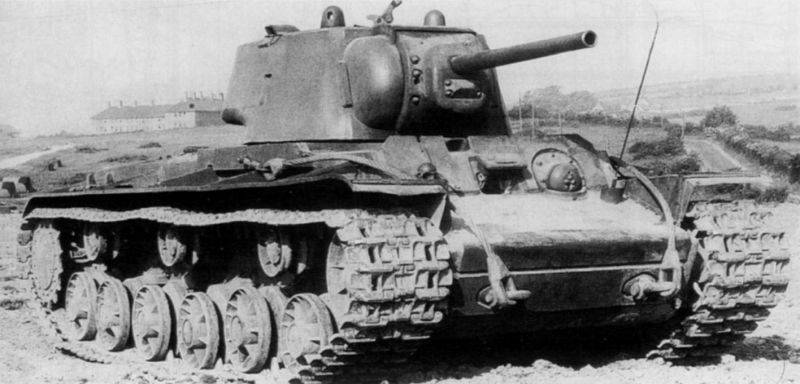
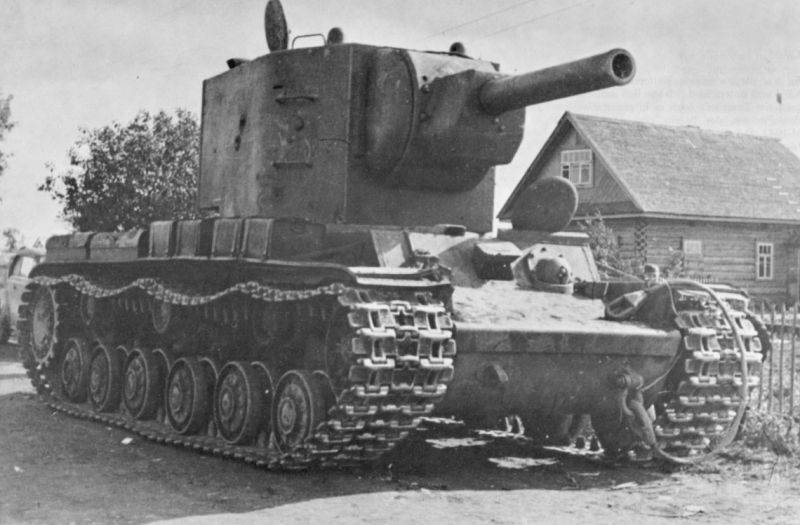
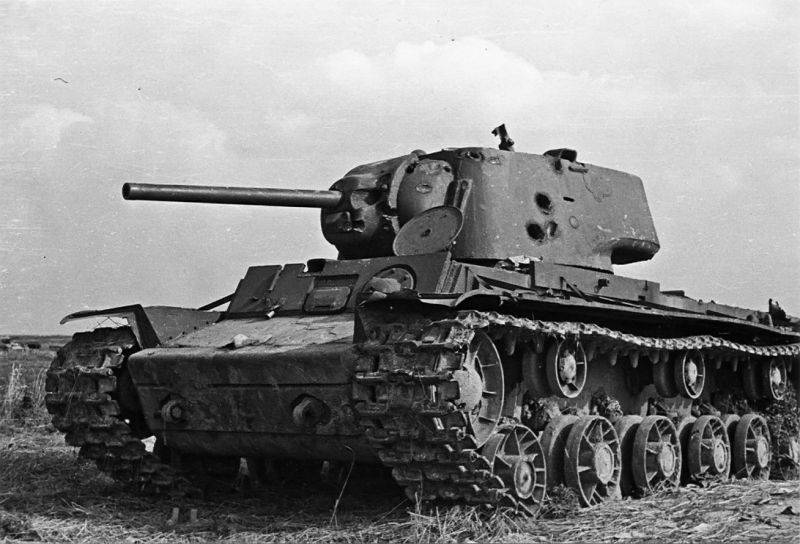
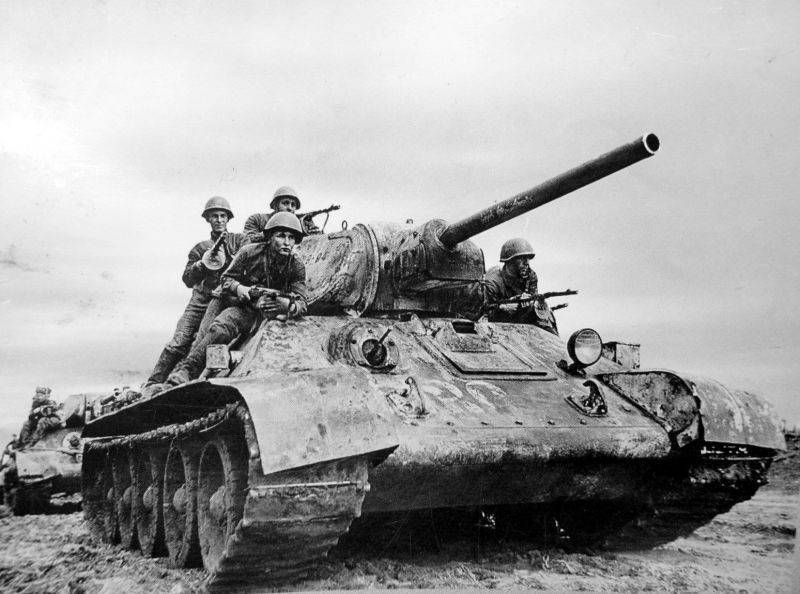
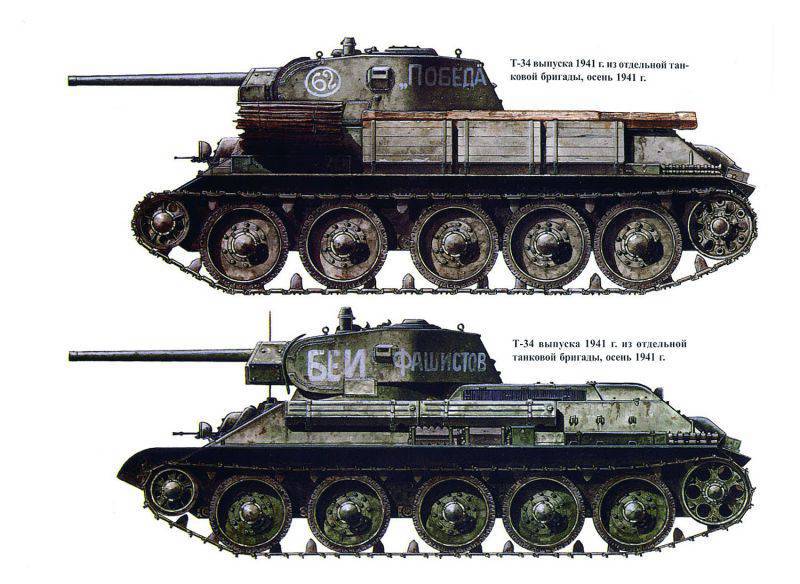
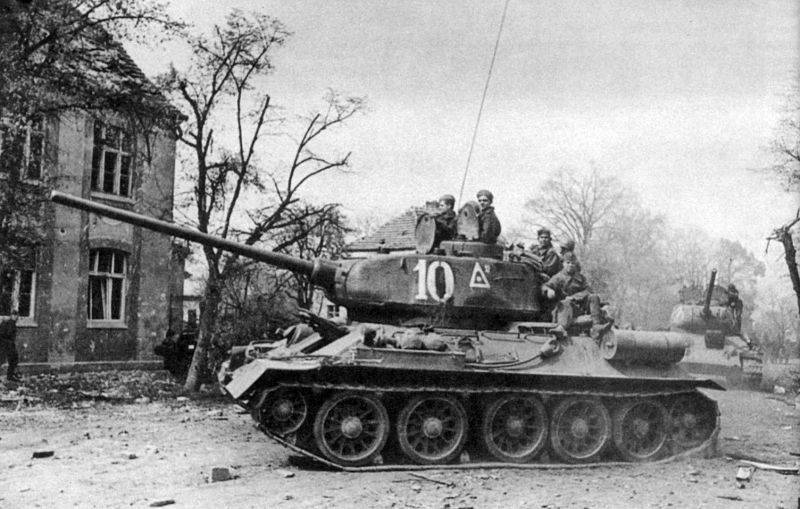
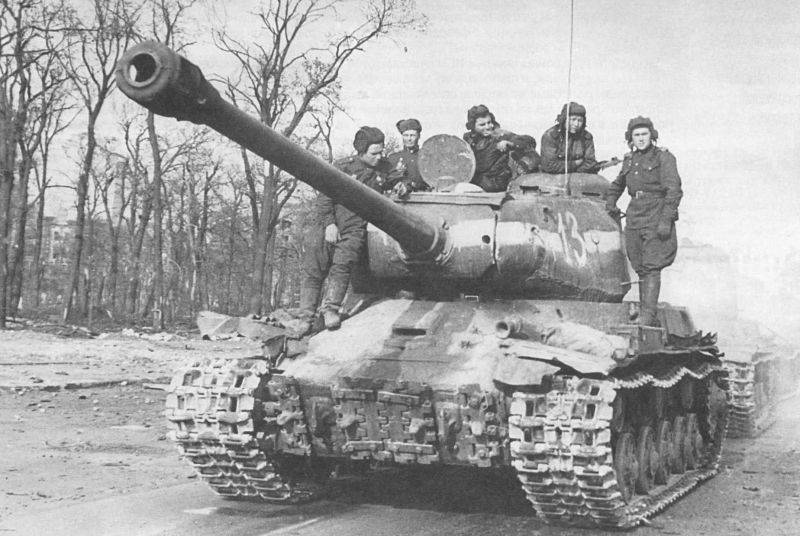
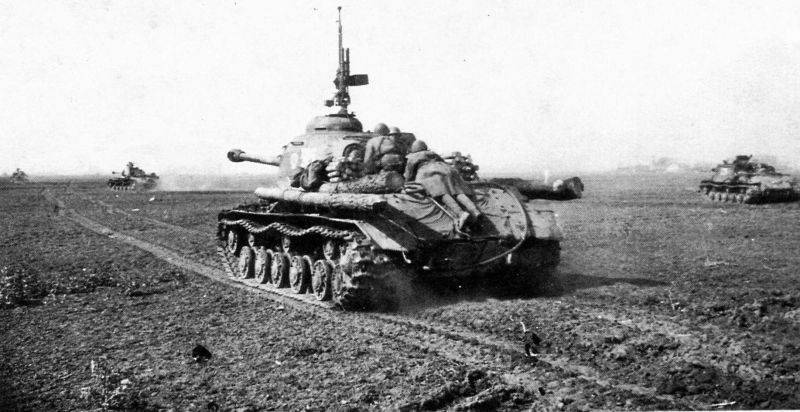
Information